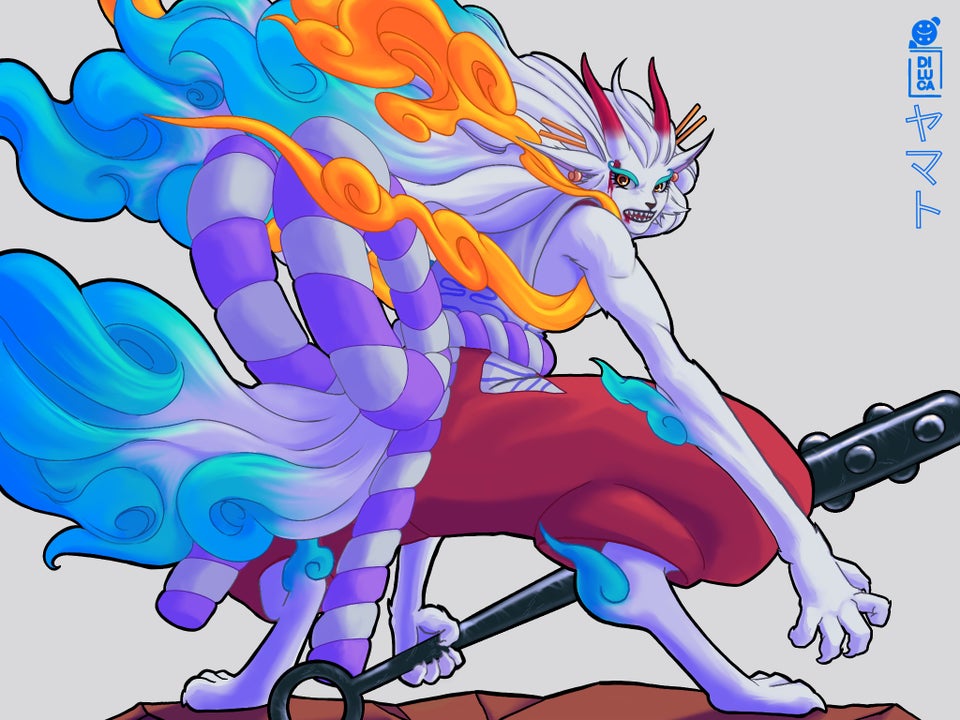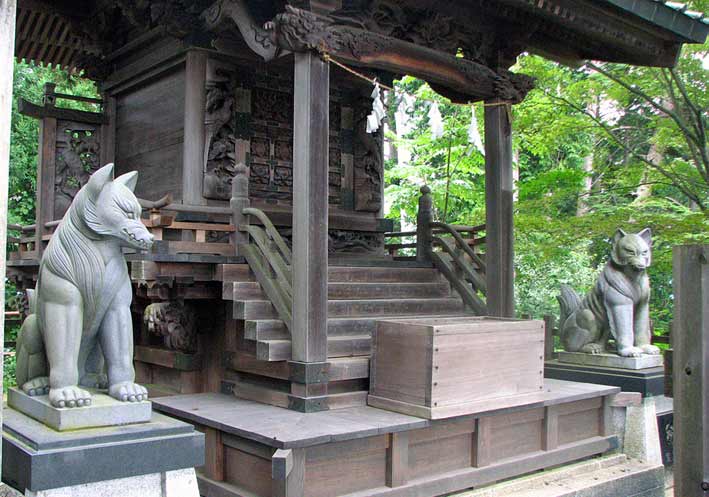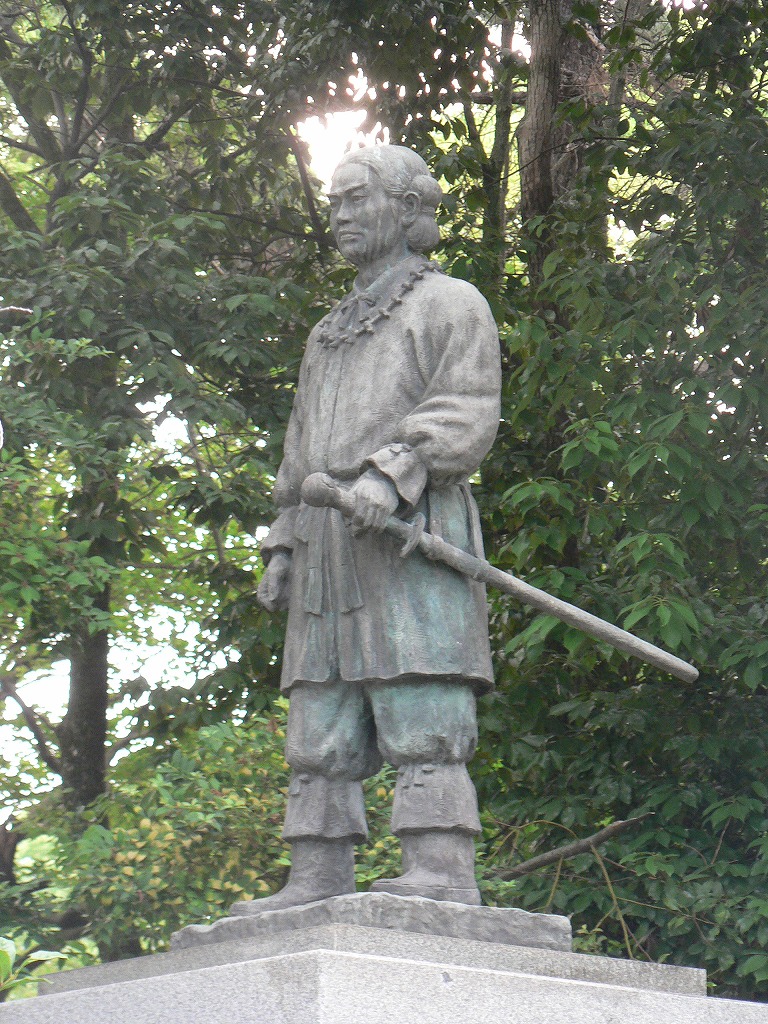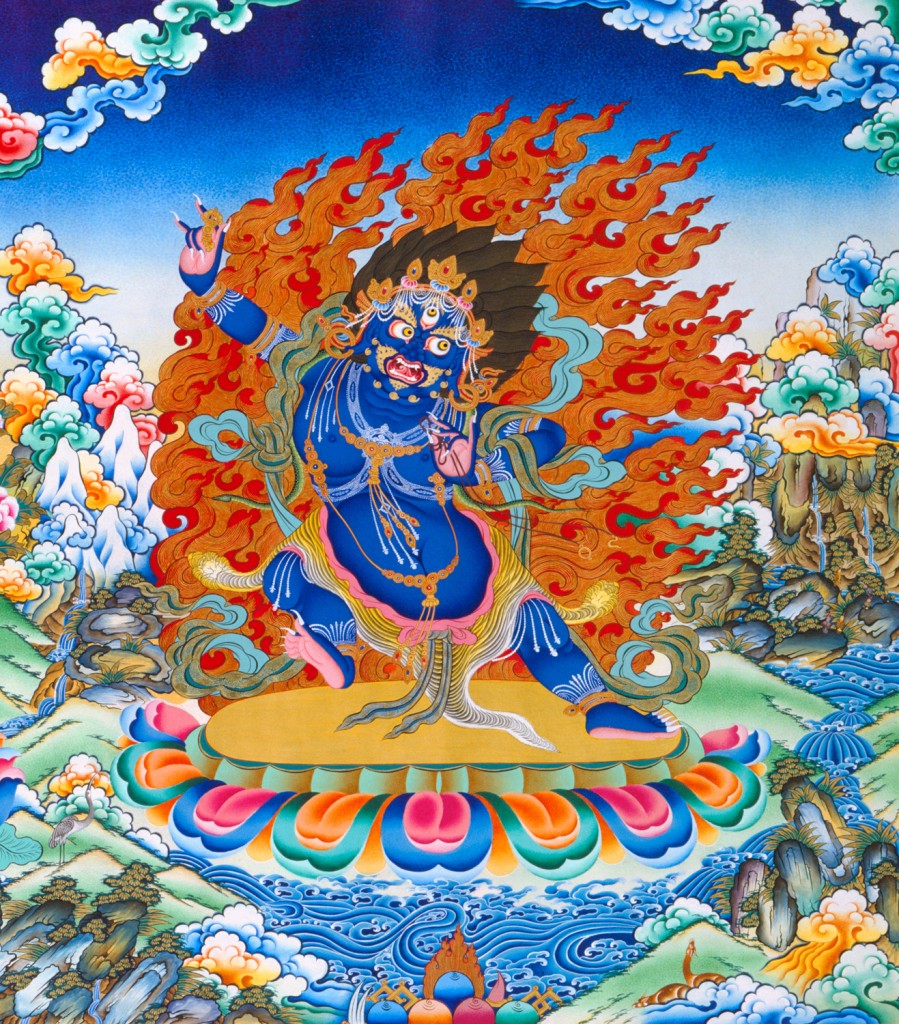In Chapter 1020 Yamato is revealed to have eaten the Inu Inu no Mi, Model: Okuchi no Makami, a Mythical Zoan-type Devil Fruit that grants the power to transform into a hybrid and full version of the Okuchi no Makami, a legendary wolf that, according to Kaido, is a “Guardian Deity of Wano Country”.

The transformation not only greatly boosts the user’s physical abilities, as a carnivorous Zoan, it presumably bestows a heightened predatory instinct, on top of equipping the user with canine fangs and claws well-suited for combat.

More specifically, the wolf form seems to come with a dramatic increase in physical strength, in Yamato’s case enough to let them clash near-evenly with their father Kaido, an Emperor of the Sea, while the latter has assumed his extremely powerful human-dragon form.

As noted by Kaido, said wolf is the “Guardian Deity of Wano”, making this Zoan particularly valuable. Its power was first hinted at during Yamato’s confrontation with Sasaki when Yamato briefly flashed their fangs, before its power was properly introduced in Yamato’s later fight with Kaido on the Skull Dome’s roof.

- This fruit is the second model of the Inu Inu no Mi series that is based on a wolf species, the first being Jabra’s regular wolf Zoan.

- The Ōkuchi-no-Magami—or simply Makami/Magami (真神?)—is the deification of the now-extinct Japanese wolf, which was traditionally worshipped as a sacred beast in Japan, like the Yamato Province. For centuries, the Makami was held as a guardian deity that understood human language and protected humans from misfortune, fire and theft, their crops from despoilment by animals, et al. Once a rather popular folkloric figure, the Makami’s worship fell into decline with the rapid depopulation of Japanese wolves following the Edo period, during Meiji era when systematic wolf hunting culled the species until it went extinct in the early 1900s. Today, the Makami is a relatively obscure deity, though it remains enshrined at various locations, like the nearly 2000-year-old Mitsumine Shrine in Chichibu-Tama-Kai National Park.

- Yamato possessing this fruit’s power may also reference a particular mythological tale from the 2nd century AD, about the legendary Japanese prince of the Yamato dynasty, Yamato Takeru (possibly Yamato’s namesake). The story tells of a white wolf whom said prince encountered in a moment of despair, after having gone astray in the mountains. Said wolf guided the prince out the mountains’ deep forests and thereby saved his life. In appreciation, the prince supposedly had many shrines constructed in dedication to the wolf god of the mountains, including the above-mentioned Mitsumine Shrine in Chichibu, Saitama (the supposed location of said mountains).

- The trail of flames around Yamato’s shoulders, forming a circle behind her head, resembles the floating, ribbon-like drapery that can be found with certain depictions of East Asian (such as Buddhist) deities, including on Japanese statuary, befitting the Ōkuchi-no-Magami’s own status as a deity.



